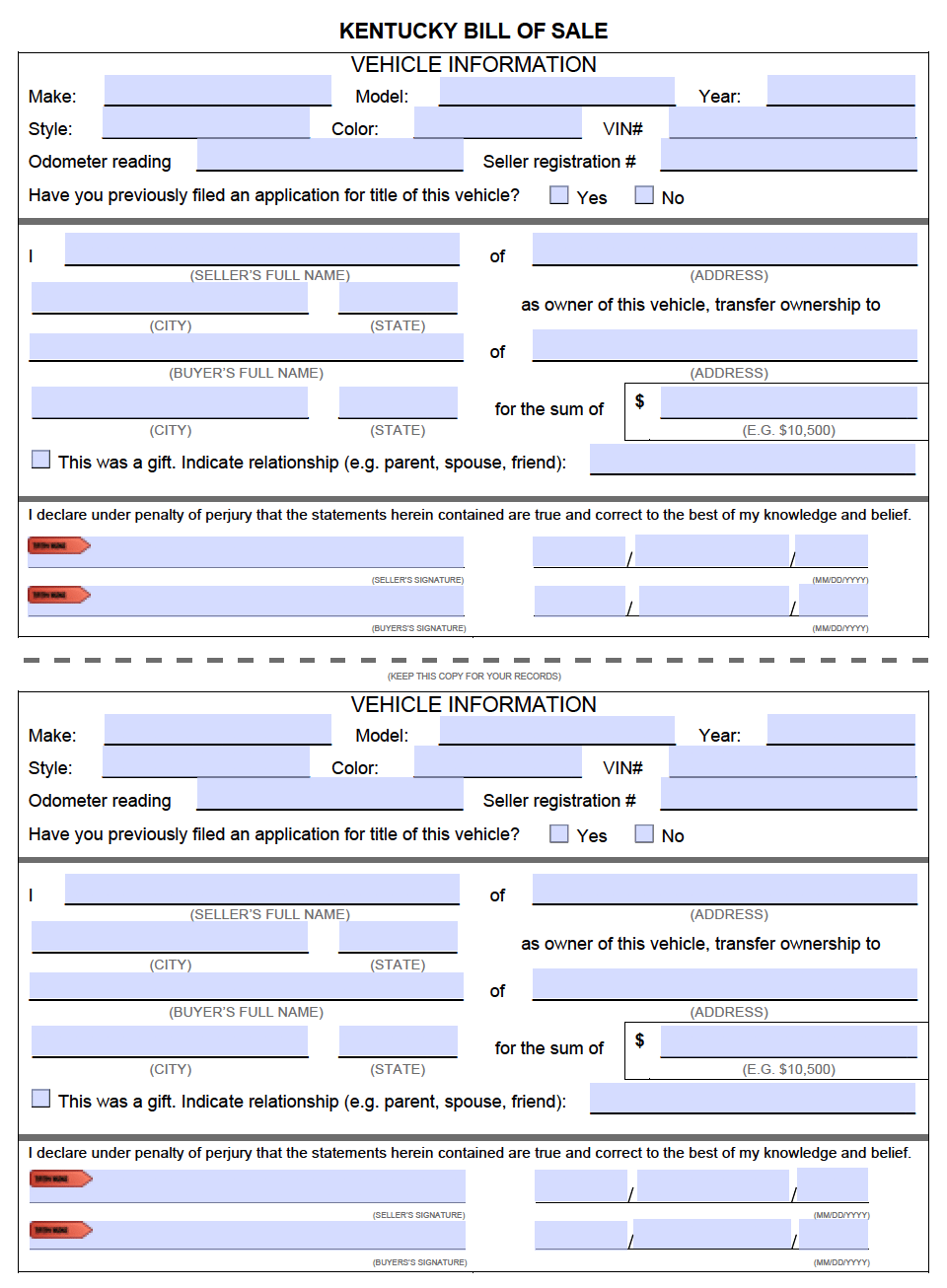The Kentucky DMV bill of sale form requires that participants record transaction details such as the vehicle’s description, seller/buyer information, and selling price. By providing this information, you are essentially creating a certificate of sale yielding concrete evidence that a transfer of ownership occurred. The state of Kentucky does not deem a bill of sale legally necessary, but it is still encouraged to carry out the contract for many beneficial purposes; for example, proof of purchase, tax reasons, the release of liability, etc.
How to Register a Vehicle
In order to legally operate your vehicle on public roadways, you must register the vehicle with the state. Proceed to your nearest county clerk’s office ready to submit:
- A bill of sale
- The title of the vehicle (if the title was issued prior to the month of February in the year 2000, then you must complete an Application for Kentucky Certificate of Title/Registration – Form TC 96-182; otherwise, you will fill out the assignment and transaction form located on the back of the title).
- Evidence that you have a current Kentucky auto insurance plan.
- SSN (Social Security Number)
- Come prepared with the necessary funds to appease any registration or tax fees
How to Write
Step 1 – Download in Adobe PDF.
Step 2 – Vehicle Information – You must have the following vehicle specs on hand:
- Make
- Model
- Year
- Style
- Color
- VIN#
- Odometer reading
- Seller registration #
- Select Yes or No depending on whether or not you have previously filed an application for the title of this vehicle.
Step 3 – Transaction Information – Here, you will list the required information concerning the transaction, such as:
- Seller(s) Full Name
- Address
- City
- State
- Buyer(s) Full Name
- Address
- City
- State
- Amount of Purchase (numerically, in dollars)
- If it was a gift, you are going to want to check the box below and provide the relationship between the parties involved (e.g. friend, spouse, parent).
Step 4 – Signatures – Both the buyer and seller have to sign the document and provide the date of signature.
Step 5 – Distributing Copies to both Parties – As you may notice, there is an identical form below the top one. Fill out the second form as you did the first and cut at the designated line. The buyer and seller can now each retain a copy for their records.



0 comments
Comments are closed.